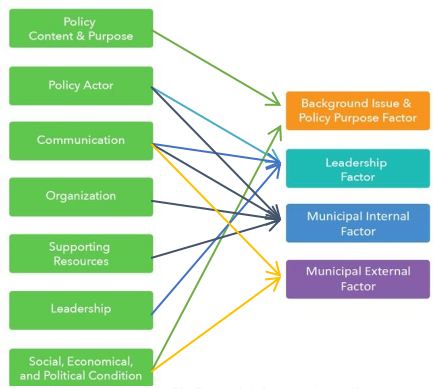Urban Green Space Development Strategy–Reconverting Gas Station To Public Parks In The City Of Surabaya, Indonesia
DOI:
https://doi.org/10.24273/jgeet.2017.2.2.306Keywords:
Reconversion, Gas Station, Urban Green Space, PolicyAbstract
Urban Green Space Development has become a challenging task for city governments especially in Indonesia, due to high prices of land around urban centers. On the other hand, there are inconsistencies between land use and land allocation within the city planning. In Surabaya City, quite a lot of gas stations were built on areas which are originally intended for green open spaces. Surabaya City Municipality is strongly committed to reconvert Gas Station Areas to green open spaces as determined in the plan. Innovative strategies have enabled the city government to reconvert 13 gas stations to public parks. This paper analyzes the implementation process of the Urban Green Space Reconversion Policy, describing the historical details of the issues, the taking over of land from gas station owners, and the park development and campaigning. Discussion also includes the most influential factors in this success story.
Downloads
References
Björk, J., Albin, M., Grahn, P., Jacobsson, H., Ardö, J., Wadbro, J., Ostergren, P.-O., 2008. Recreational values of the natural environment in relation to neighbourhood satisfaction, physical activity, obesity and wellbeing. J. Epidemiol. Community Health 62, e2. doi:10.1136/jech.2007.062414
Grahn, P., Stigsdotter, U.A., 2003. Landscape planning and stress. Urban For. Urban Green. 2, 1–18. doi:10.1078/1618-8667-00019
Han, R., Tang, B.J., Fan, J.L., Liu, L.C., Wei, Y.M., 2016. Integrated weighting approach to carbon emission quotas: An application case of Beijing-Tianjin-Hebei region.
J. Clean. Prod. 131, 448–459. doi:10.1016/j.jclepro.2016.05.001
Kaplan, S., 2001. Meditation, Restoration, and the Management of Mental Fatigue. Environ. Behav. 33, 480–506. doi:10.1177/00139160121973106
Maas, J., Verheij, R. a, Groenewegen, P.P., de Vries, S., Spreeuwenberg, P., 2006. Green space, urbanity, and health: how strong is the relation? J. Epidemiol. Community Health 60, 587–592. doi:10.1136/jech.2005.043125
Nielsen, T.S., Hansen, K.B., 2007. Do green areas affect health? Results from a Danish survey on the use of green areas and health indicators. Heal. Place 13, 839–850. doi:10.1016/j.healthplace.2007.02.001
Schipperijn, J., Stigsdotter, U.K., Randrup, T.B., Troelsen, J., 2010. Influences on the use of urban green space – A case study in Odense, Denmark. Urban For. Urban Green. 9, 25–32. doi:10.1016/j.ufug.2009.09.002
Thaiutsa, B., Puangchit, L., Kjelgren, R., Arunpraparut, W., 2008. Urban green space, street tree and heritage large tree assessment in Bangkok, Thailand. Urban For. Urban Green. 7, 219–229. doi:10.1016/j.ufug.2008.03.002
Ulrich, R.S., 2006. Evidence-based health-care architecture. Lancet 368, 38–39. doi:10.1016/S0140-6736(06)69921-2
Wey, W., 2015. Smart growth and transit-oriented development planning in site selection for a new metro transit station in Taipei , Taiwan. Habitat Int. 47, 158–168. doi:10.1016/j.habitatint.2015.01.020

Downloads
Published
Issue
Section
License
Copyright @2019. This is an open-access article distributed under the terms of the Creative Commons Attribution-ShareAlike 4.0 International License which permits unrestricted use, distribution, and reproduction in any medium. Copyrights of all materials published in JGEET are freely available without charge to users or / institution. Users are allowed to read, download, copy, distribute, search, or link to full-text articles in this journal without asking by giving appropriate credit, provide a link to the license, and indicate if changes were made. All of the remix, transform, or build upon the material must distribute the contributions under the same license as the original.










